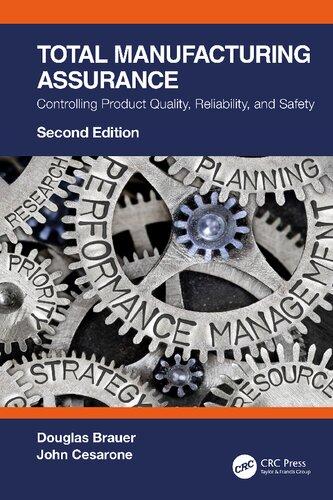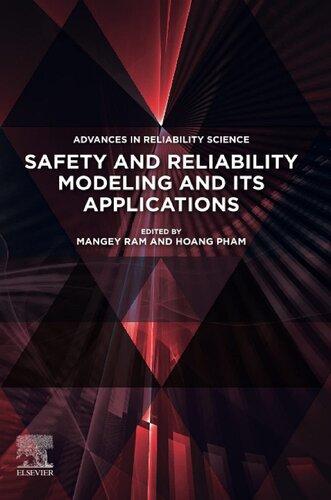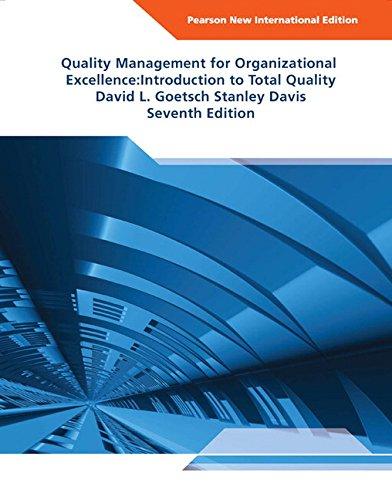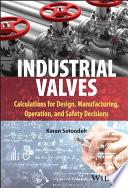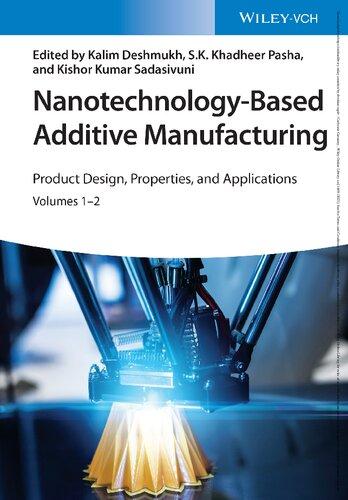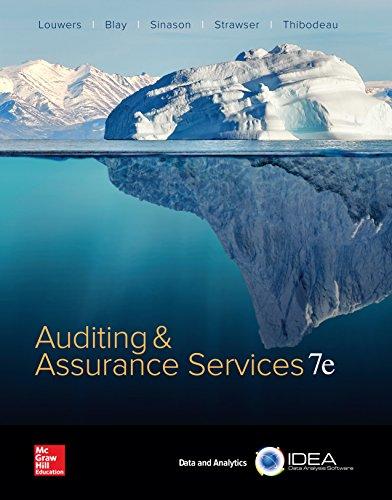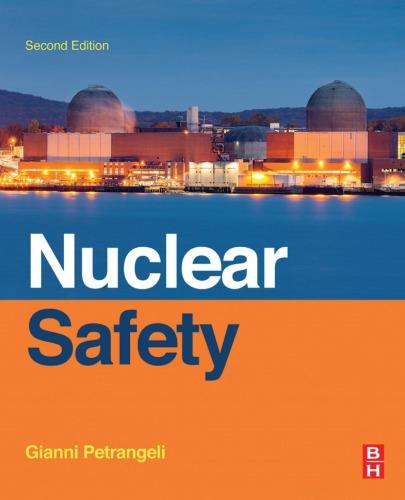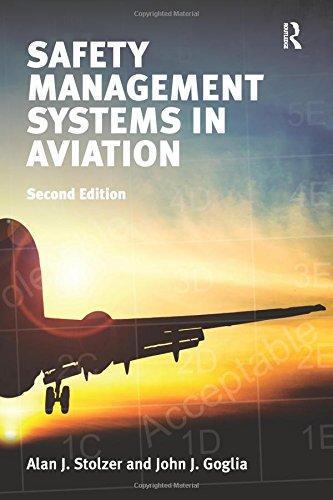Total Manufacturing Assurance
Controlling Product Quality, Reliability, and Safety
Second Edition
Dr. Douglas Brauer and Dr. John Cesarone
Second edition published 2022 by CRC Press
6000 Broken Sound Parkway NW, Suite 300, Boca Raton, FL 33487-2742
and by CRC Press
4 Park Square, Milton Park, Abingdon, Oxon, OX14 4RN
© 2022 Douglas Brauer and John Cesarone
CRC Press is an imprint of Taylor & Francis Group, LLC
Reasonable efforts have been made to publish reliable data and information, but the author and publisher cannot assume responsibility for the validity of all materials or the consequences of their use. The authors and publishers have attempted to trace the copyright holders of all material reproduced in this publication and apologize to copyright holders if permission to publish in this form has not been obtained. If any copyright material has not been acknowledged please write and let us know so we may rectify in any future reprint.
Except as permitted under U.S. Copyright Law, no part of this book may be reprinted, reproduced, transmitted, or utilized in any form by any electronic, mechanical, or other means, now known or hereafter invented, including photocopying, microfilming, and recording, or in any information storage or retrieval system, without written permission from the publishers.
For permission to photocopy or use material electronically from this work, access www.copyright. com or contact the Copyright Clearance Center, Inc. (CCC), 222 Rosewood Drive, Danvers, MA 01923, 978-750-8400. For works that are not available on CCC please contact mpkbookspermissions@ tandf.co.uk
Trademark notice : Product or corporate names may be trademarks or registered trademarks and are used only for identification and explanation without intent to infringe.
Library of Congress Cataloging‑in‑Publication Data
Names: Brauer, Douglas, author. | Cesarone, John, author.
Title: Total manufacturing assurance : controlling product quality, reliability, and safety / Douglas Brauer and John Cesarone.
Description: First edition. | Boca Raton, FL : CRC Press, 2022. | Includes bibliographical references and index.
Identifiers: LCCN 2021048082 (print) | LCCN 2021048083 (ebook) | ISBN 9781032076362 (hbk) | ISBN 9781032076379 (pbk) | ISBN 9781003208051 (ebk)
Subjects: LCSH: Quality assurance. | Total quality control.
Classification: LCC TS156.6 .B75 2022 (print) | LCC TS156.6 (ebook) | DDC 658.5/62—SSdc23/eng/20211109
LC record available at https://lccn.loc.gov/2021048082
LC ebook record available at https://lccn.loc.gov/2021048083
ISBN: 978-1-032-07636-2 (hbk)
ISBN: 978-1-032-07637-9 (pbk)
ISBN: 978-1-003-20805-1 (ebk)
DOI: 10.1201/9781003208051
Typeset in Times by codeMantra
Section iii Manufacturing System control
Section iV System improvement Monitoring
Foreword
Technology increased the standard of living to unprecedented levels for most of the world. The drive to further lift up the ability of people to afford and access products is underway. For consumers around the globe, key factors such as affordability, quality, reliability, and safety of products are of paramount importance. People expect the products to be low cost and very reliable, high quality, and safe. With the increased use of quality control technologies in design and manufacture of goods, including robotics and Internet of Things (IoT), the product quality across the board has made significant improvement over the past few decades. In the next industrial revolution, powered by IoT and Industry 4.0, all goods and services will be monitored from conception though manufacturing, operation, and disposition. This will lead to an exponential increase in product quality, reliability, and safety. Organizations that master the product quality will be the winners in the marketplace. That is possible with a holistic and strategic approach.
Total Manufacturing Assurance (TMA) is a holistic concept to address these issues that includes all aspects of quality control. The book provides guidance for professionals to develop long-term strategies for quality for a corporation with global footprint, as well as case studies that will be tutorial for young engineering students. The book is valuable for professionals and executives at corporate world, as well as students in management, mechanical, industrial, and manufacturing engineering. It outlines the strategic planning of global manufacturing processes with quality in mind; factories that can be controlled and monitored in real time from anywhere in the world 24/7.
This second edition of the textbook, by global experts Professors D. Brauer and J. Cesarone, is a much-needed addition to the foundational technical material in Total Manufacturing Assurance. It is a timely public service to diligently compile this material to educate the technologists around the world.
Sabri Cetin, PhD
Professor, University of Illinois at Chicago President, Servo Tech, Inc.
Preface
The second edition of Total Manufacturing Assurance: Controlling Product Reliability, Safety, and Quality continues its objective to present an enhanced perspective for the innovative concept of Total Manufacturing Assurance (TMA) and the holistic means by which such assurance can be attained. In fulfilling this objective, the textbook discusses the management and engineering techniques and tools, and their practical implementation, necessary to achieve TMA.
The uniqueness of the textbook is derived from its presenting the concept of TMA. As with the original edition, TMA remains a highly relevant concept, as there remains no known other referenceable work which focuses on establishing a manufacturing environment and process that assures the attainment of manufactured products that exhibit, and retain, their designed-in levels of reliability, safety, and quality. This second edition is expanding on and integrating fundamental manufacturing, engineering, and management topics, which are holistically key in achieving TMA. Originally included as part of a quality and reliability textbook series, this new edition expands its reach as a seminal textbook as part of an engineering coursework and professional development focused on, for example, General Engineering, Industrial & Systems Engineering, Manufacturing Engineering, Mechanical Engineering, and Business Operations.
TMA comprises three primary elements: (1) Strategic Manufacturing Management, (2) Manufacturing System Control, and (3) System Improvement Monitoring. Each of these elements plays a key role in ensuring that products are manufactured in a manner which supports the profitability, sustainability, and growth strategic goals of a business. A major theme throughout the text is the strategic importance of TMA for companies competing for local, regional, and/or global market share. TMA is a strategic-driven, holistic pathway engaging management, engineering, and production personnel to maximize efficiency, effectiveness, and profitability.
The textbook is divided into four major sections: (1) Introduction, (2) Strategic Manufacturing Management, (3) Manufacturing System Control, and (4) System Improvement Monitoring. This enables the reader to focus on a particular aspect of TMA.
The Introduction section consist of two chapters. Chapter 1 provides an overview of the history of manufacturing detailing the global industrial revolutions; recognizing key innovations in management and manufacturing; highlighting seminal business, technology, and world events; and providing insight to the manufacturing advances seen with the ongoing advent of Industry 4.0. Chapter 2 introduces and defines the three major elements of TMA: strategic manufacturing management, manufacturing system control, and system improvement monitoring. Additionally, the TMA thread of create, control, and critique is presented.
The Strategic Manufacturing Management section consists of five chapters. Chapter 3 discusses strategic planning and the roll out of tactics. The use of key performance indicators is highlighted. Chapter 4 provides an overview of innovation and technology transfer. Technology development and the strategic implications
of its commercialization are presented in conjunction with a detailed technology transfer checklist. Chapter 5 dives into engineering economic analysis, with a focus on financial proforma development and looking at a variety of financial analysis tools to make business decisions. This includes exploring make/buy decisions and the fundamental role of breakeven analysis. Chapter 6 discusses the role of management control to achieve TMA. This includes the integration of key business areas impacting TMA, project management methods, decision-making methods, leveraging of I4.0 technologies, implementation of computer-integrated manufacturing, and use of expert systems. Chapter 7 addresses organizational leadership. Several topics addressing the workforce are addressed, such as motivation, teaming, performance appraisal, workforce development and training, technical personnel hiring, and organizational succession planning.
The Manufacturing System Control section consists of four chapters. Chapter 8 provides insights into systems engineering in the manufacturing environment. This includes a comprehensive study of moving material through the factory, with special attention to simulation methods and advanced automation building blocks. Additionally, this chapter introduces manufacturing process engineering and methods (i.e., metal working, molding, fiber composites, assembly methods, and micromanufacturing tools), as well as information for industrial materials and their selection performance features and characteristics. Chapter 9 addresses product manufacturing degradation control during manufacturing. Engineering and control information and analysis methods are provided for areas of reliability, safety, and quality. Additionally, lean manufacturing, design for manufacturability, and manufacturing effectiveness design and assessment techniques are delineated. Chapter 10 provides a comprehensive insight to system maintenance covering maintenance program planning, reliability-centered maintenance, and maintenance strategy (specifically, preventative, corrective, and on-condition maintenance approaches).
The System Improvement Monitoring section consists of three chapters. Chapter 11 addresses big data system planning addressing data organization, system structure, and system operation. Chapter 12 addresses data recording and feedback to facilitate real-time collection, analysis, and feedback to optimize manufacturing operations. Data communications and FRACA are highlighted. Finally, Chapter 13 provides insight into manufacturing system performance analytics, with special emphasis on key performance indicators.
This textbook exhibits many special and innovative features. A key special feature is the inclusion of a case study at the end of chapters to facilitate keen understanding of the topical subjects addressed. While serving as a valuable teaching tool, the case studies illustrate the practical application of the material presented in each chapter and the benefits that can be realized. The case studies are standardized to provide an overview of the issue at hand, the strategic objective for resolution, the approach taken, results realized, and a summarizing conclusion. It will also help personalize the material for the readers so that they can more readily understand, embrace, and implement TMA as a strategic initiative. A second special feature is the highlighting and emphasis of Industry 4.0 technologies prominent in advanced manufacturing, but also broadly engaging the financial, logistics, and information technology business sectors.
The intended audience for the textbook is both working professionals and students in higher education. Working professionals include management, engineering, and others intimately involved in the manufacturing system. Students studying engineering management and mechanical, industrial, and manufacturing engineering, and business students (both university advanced undergraduate and graduate levels) will find the textbook an invaluable instructional resource, as will professors. The textbook’s material will address the management and technical topics presented in the level of detail necessary for their full understanding and implementation to achieve TMA. PowerPoint slides and a solutions manual are also available to instructors for qualified course adoptions (http://www.routledge.com/9781032076362). In general, it is envisioned that the text will serve as a comprehensive and affordable fundamental reference and educational tool.
The authors thank everyone engaged for direct and indirect significant contributions to the writing of this second edition of TMA. A special acknowledgment goes to Ms. Laurie Brauer (MudTurtle Industries, LLC) for her work in preparing the graphic artwork. Additionally, the following people provided guiding insights for various sections of the textbook: Cheston Brauer (Manager Strategic Planning, Advocate Hospitals), Dr. Sabri Cetin (Professor, University of Illinois at Chicago & President, Servo Tech Inc.), Dr. Sheri Litt (Associate Provost, Florida State College at Jacksonville), Dr. Roh Pin Lee (Head of Technology Assessment, Technische Universität Bergakademie Freiberg, Germany), and Dr. Clifford Harbour (Professor, University of North Texas).
Douglas Brauer John Cesarone
Authors
Dr. Douglas Brauer has over 30 years of global expertise in facilitating solutions to maximize organizational leadership, sustainability, profitability, and return on investment encompassing both and higher education. His scope of global strategic leadership activities involving education, engineering, and manufacturing operations has engaged organizations globally in the Americas, Europe, Africa, India, and the Pacific Rim. He has taught higher education undergraduate and graduate courses in finance, organizational leadership, mathematics, and manufacturing technology. His private business activities include founding Design Assurance Sciences in 1990 and MudTurtle Industries, LLC, in 2016. Degrees include PhD, Education & Human Resource Studies, Colorado State University; MS, Industrial Engineering, University of Illinois at Chicago; and BS, Industrial Technology, Illinois State University. Additionally, he is currently the Dean of Engineering & Industry at the Florida State College at Jacksonville.
Dr. John Cesarone has engaged in an engineering consulting practice since 1998. His research interests and areas of expertise include Intelligent Manufacturing, focusing on the following: (1) Computer-Integrated Manufacturing Technologies, (2) Simulation and Functional Modeling Methodologies, (3) Optimization Using Operations Research Techniques, (4) Automation and Robotics, and (5) Distance Learning. Degrees include PhD, Mechanical Engineering, Northwestern University; MS, Mechanical Engineering, University of Illinois-Urbana-Champaign; and BS, Mechanical Engineering, University of Illinois-Urbana-Champaign. He has taught industrial engineering courses for the University of Illinois and Northwestern University, and is currently a Senior Lecturer of Mechanical Engineering for the Illinois Institute of Technology.
1 The World of Manufacturing
By the simplest definition, manufacturing is the process of making a finished product from raw material in accordance with an organized plan. A piece of cake. Anybody can do it. Manufacturing can be accomplished by anyone blindfolded and with one hand tied behind their back. Nothing could be farther than the truth.
All too often this seems to be the carefree attitude taken. With some raw materials, a couple of machines, and a vague product idea, it is only a matter of time before the products start rolling out and the money starts rolling in. Obviously, there is much more involved in manufacturing than merely shot-gunning hardware out the plant door.
There are three fundamental concerns of a manufacturing organization which must be integrated together in order to ensure success: (1) organizational management (which includes marketing, sales, finance, etc.), (2) engineering, and (3) production. Each of these concerns centers on people and each provides key contributions in the overall manufacturing effort. Yet without the other two, each is helpless. So, it must be reconciled that a “team” effort is necessary for organizational success.
The corporate structure and its ability to be successful is analogous to a needle and thread. There must be a common thread that binds everything, and, most importantly, that binds everyone, together to maximize the probability for business success. The thread itself is the organizational management approach and the corporate culture, or attitude, instilled in its team members.
So, what does all this mean? It means that the organization is, at the very least, a team. The manufacture of products is a result of many people working together to achieve a common goal. The organization comprises team members intimately linked together by the organizational thread…weak thread: weak team…strong thread: strong team.
Obviously, there must be a hierarchy of management in order to ensure that products do get manufactured correctly, efficiently, and in a timely manner. However, the full potential of any organization cannot be realized if there is a lack of mutual respect and caring between persons positioned on different levels of the corporate ladder. A strong binding thread must be in place.
1.1INDUSTRIALREVOLUTION
The current state of manufacturing is a result of much patient learning and heuristic applications of innovative concepts. This learning has by no means stopped and it must not. Global and national markets are becoming increasingly more competitive. Aside from the issue of cost, there is an ever-increasing consumer awareness of the right for high-quality products and services.
DOI: 10.1201/9781003208051-2
By taking a quick look at history, it becomes clear that much progress has been made. Corporations for the most part have evolved from a neanderthal-type management mindset to a more progressive, understanding, and compassionate style. (Unfortunately, this is not universally the case.)
A good place to pick up in history is the industrial revolution. But, which one? It is generally accepted that there have been four defined to capture significant turning points in time. It is important to note that each industrial revolution resulted an accelerated use of, and need for, advanced manufacturing systems. From the very first one, it may very well have witnessed the birth of the manufacturing engineer. The industrial revolutions are generally classified into four periods:
1. Steam (circa 1765): highlighted by use of coal to produce steam resulted in more mechanization and movement of people and goods by the railroad.
2. Electromechanical (circa 1870): highlighted by the emergence of electricity, gas, and the development for steel demand, chemical synthesis, and methods of communication such as the telegraph and the telephone, and, of course, the inventions of the automobile and the airplane.
3. Digital/Computer (circa 1969): highlighted by the emergence of nuclear energy, electronics, telecommunications, and computers, all led to advancements in, for example, space exploration and biotechnology, as well as led to the invention of programmable logic controllers (PLCs) and robots to introduce the era of high-level industrial automation.
4. Technology/Informatics (circa 2000): highlighted by a focus on renewable energies (e.g., solar, wind, thermal, and water), the connection of “operations” to “analytics” has facilitated real-time advanced decision-making using “big data,” which simply means accelerated system optimization. The global institutionalization of the internet and computing power has led to routine applications of artificial intelligence (AI), virtual/augmented reality, machine learning, etc., to manufacturing optimization. This industrial revolution is often referred to as Industrial 4.0.
Some interesting characteristics of each industrial revolution are as follows: they typically coincide with an “energy” source, they result in iconic inventions and iconic entrepreneurs, and they drive and accelerate innovation and technology development to decrease the time to the next industrial revolution, that is, the “industrial revolutions” are coming faster. Throughout history, people have always been dependent on technology and leveraged its development in vast economic and social ways. Of course, the technology of each era did not have the same shape and size as today, but for each in their time technology advancements were certainly significant and helped to enrich lives.
There are many lessons to be learned by taking a deeper look at the first industrial revolution. It began in England in the early eighteenth century. It rapidly spread to other parts of the world during the remainder of the eighteenth century and into the nineteenth century. Although the first industrial revolution gained much worldwide momentum, many countries failed to witness the movement. Even today, there are many areas in the world which have remained essentially untouched by mechanized
manufacturing system technology. However, during the latter part of the 1800s, several countries emerged as major industrial leaders. England, Germany, Italy, Japan and the United States became the most important industrial nations.
A key beneficiary of the great strides being made in mechanization was agriculture. As with agricultural processes, advances in engineering made it possible to improve and employ innovation in manufacturing processes. Machines and equipment began replacing inefficient systems driven by manually created motive power. A classic example is the steam engine. Steam power characterized the nineteenth century at its climax. Other sources of power, including electricity, petroleum, and nuclear power, proved to characterize the continuing industrial revolutions of the twentieth century.
The first industrial revolution also had far-reaching socioeconomic consequences. These varied in detail from country to country and are still present in countries undergoing technological changes. The most obvious and most direct consequences were a tremendous increase in the production of material goods. For example, mechanization enabled textile plants in England to produce billions of yards of cotton cloth a year. This increase in production was many times as much as that capable by people (i.e., men women, and children) working with old-fashioned spinning wheels and handlooms.
By 1900, the United States had become the greatest manufacturing nation in the world. Technological skill, government policies, business leadership, natural resources, labor supply, and large markets all contributed to the rapid progresses made. The combination of these advantages enabled the United States to become the world leader in industrial productivity.
While the total output of industry in the United States was increasing, the number of individual plants was decreasing. As plants grew fewer, and on the average larger, so did the business firms that operated them. Before the Civil War, the typical company was owned and run by an individual or partners, though a number of corporations existed. After the war, corporations became larger and more numerous.
For the owners of a company, its large size provided certain advantages. It enabled the company to lower its costs through mass purchasing and mass production. Often, it also served as a tool in weakening or eliminating competitors, and thus it enabled the company to maintain or even to raise prices. For consumers, large businesses were not necessarily advantageous. To the extent that low costs led to low prices, the consumer benefitted. However, in many instances, the benefits never came to fruition.
Significant events ongoing in the United States during this period created fundamental changes in demographics. People moved to large cities, medical advances caused people to live longer, and new means of transportation allowed people to move widely around the country. Also, at this time, a great insurgence of immigrants occurred.
A key side effect of the technological and economic changes ongoing was the formation of unions or organized labor groups. This in turn led to the formation of the classic industrial conflict between corporations and unions. As corporations became the owners of industries, organized labor became necessary to offset the power and consequent employee abuses present. The unions implemented strikes and boycotts.
Basic demands included improved working conditions, recognition of unions as bargaining agents, and the passing of federal laws to regulate various industries.
These early years were shaped by many well-known business persons. Names such as Cyrus McCormick (reaper works), Charles Goodyear (vulcanized rubber), Isaac Singer (sewing machine), Samuel Colt (gun mass production), John Rockefeller (oil), Andrew Carnegie (steel), Thomas Edison (electricity/inventions), George Westinghouse (electricity), J. Pierpont Morgan (finance/banking), Ransom Olds (automobile), and Henry Ford (automobile) all provided key contributions to our manufacturing management and engineering knowledge and growth [1]. However, as manufacturing capability, efficiency, and productivity increased, so did the ignorance of corporate management to the fundamental needs of the workforce regarding respect, honesty, caring, equity, and education/workforce development.
1.2 INNOVATION IN MANAGEMENT AND MANUFACTURING
Without a doubt, the list of contributors to manufacturing management, organization, and engineering innovation fills several pages. Their contributions enabled major strides to be made in technological and management advancements. Corporations such as Ford, Motorola, General Motors, International Business Machines, Xerox, Kodak, and many others continue to push the state of the art in both automated manufacturing and management concepts.
The automated manufacturing capabilities of today (e.g., computer-integrated manufacturing and flexible manufacturing systems) are far superior to the capabilities available to Henry Ford. But, many of the manufacturing philosophies in use worldwide today were seeded by people of that era. For example, in the early 1900s, the Just-In-Time approach to manufacturing was used in a crude form by Ford; Statistical Process Control was defined by Shewhart; and Design of Experiments was developed by Fisher. These manufacturing management/control tools are the subject of much discussion and use during the 1980s and will be well into the 1990s. With the re-discovery and use of many innovative manufacturing ideas (which were ahead of their time) to increase efficiency, productivity, and profitability, organizations are taking to heart the demand by consumers to get reliable, safe, and quality products.
This perhaps was a hard rediscovery and admittance on the part of business in the United States. It took a raising of the quality bar by Japanese corporations to wake up the quality unconscious organizations around the world, and particularly those in the United States. Names such as Deming, Juran, Crosby, Feigenbaum, Taguchi, and Shainin identify some of the more well-known quality gurus. Their concepts continue to be used in high demand and their ideas are common place in quality discussions and activities around the world. These concepts continue to be foundational for programs such as Six Sigma, Lean, Just-In-time, and Manufacturing System Effectiveness.
1.3INDUSTRY4.0
The world is in a rapid state of technology research, development, and implementation. The time between each industrial revolution decreases and will continue to
do so as world technological events and consumer thirst for advanced technologies continue.
Industry 4.0 (I4.0), as an advanced manufacturing driver, necessarily must address the widening skills gap resulting from businesses redesigning and streamlining production lines through intelligent sensor technology, motors, robotics, and increasingly automating processes with the adoption of Internet of Things (IoT) technology and computers. As the Manufacturing Institute stated, “With smart manufacturing or Industry 4.0, manufacturers are moving towards a new level of interconnected and intelligent manufacturing systems which incorporate the latest advances in sensors, robotics, big data, controllers, and machine learning. The greater digital interconnectedness between parts of the supply and production chains, as well as higher reliance on automation in these smart factories, is going to make manufacturing ultra-efficient, ultra-sophisticated, and ultra-productive” [2].
As a result, companies have a heightened need for a comprehensive strategic model (i.e., TMA) to embrace advanced manufacturing and an advanced workforce to understand and apply complex science and engineering concepts along with analytical skills to address the I4.0 revolution of manufacturing. Because advanced manufacturing also includes workers’ ability to analyze and manipulate big data, attaining TMA reinforces the strategic need to “create, control, and critique” to ensure business sustainability and profitable application of I4.0 technologies. By 2020, it was predicted that IoT technology would be in 95% of electronics for new product designs. Already, smart factories have become a reality as the IoT connects any factory device to the internet, from industrial robots to 3D printers, enabling goods to be produced around the clock and managed remotely. Key components that allow Industry 4.0 to come to life are: Cyber-Physical Systems: electromechanical devices with connectivity and digital communication capabilities; IoT: the network of physical objects that use sensors to capture data through embedded connectivity to exchange it over the internet; Industrial Internet of Things (IIoT): the application of IoT to the manufacturing world; Internet of Services: refers to the usage and combination of IoT devices and applications to provide services to end users [3]. Augmented Reality (AR) technology allows technicians to watch real-time information from the work they are performing. Because manufacturing processes are becoming more autonomous, integrated, and intelligent, this leads to changes in requirements for the manufacturing workforce towards an increasing need in software, programming, and interdisciplinary skills [4].
As a global manufacturing industry growth example, according to Deloitte’s 2020 Global Aerospace and Defense Industry Outlook [5], the global commercial space sector is likely to see steady investments in new and existing space technologies and services, with funding coming primarily from governments and venture capital. Additionally, demand for military equipment is expected to increase over the next 5 years as governments across the globe focus on military modernization, given increasing global security concerns. Global defense spending and investment is expected to grow at a compound annual growth rate of about 3% over the 2019–2023 period reaching US$2.1 trillion by 2023 [6].
It is important to recognize that I4.0 technologies are not limited to advanced manufacturing but also readily cross over financial services, logistics and transportation,
Data Collection
Analysis
Real-Time Decision-Making System Optimization
and information technology. It is clear that advanced technologies, fundamentally identical, are used across all facets of the global economy. It really does not matter what industry or business sector one looks at, the result is the same in that advanced technologies are integrated into and present in everyday operations.
This indicates that not only must businesses be very strategic in implementing technology to achieve TMA but also workforce development must be driven by on-coming and next-generation I4.0 work issues and technologies that require enhanced skills and knowledge of topics such as mechatronics, composites, automated machining, AI, big data and analytics, IoT, virtual/augmented reality, advanced robotics, cybersecurity, supply chain visibility, block-chaining, additive manufacturing, and autonomous technologies. Broadly, the need is now for a talented and flexible workforce aligned with advanced manufacturing, information technology, logistics/transportation, and financial security to implement, use, and advance I4.0 technologies.
Where does society and manufacturing organizations, and businesses in general, go from here? There is little chance to escape the continuing advancements in technology, which drive advanced manufacturing. Computers play a major role in manufacturing today, and their role will broaden with advances in the development of AI. The use of AI is a field of computer science focusing on using computer technology to emulate the behavior of humans in solving problems. The use of AI magnifies the need for both a comprehensive data system and supporting data recording and feedback system. Figure 1.1 illustrates the conceptual framework for manufacturing system intelligence to attain ongoing optimization [3,7–13]. Three fundamental components for any AI-based application include data collection, data analysis, and realtime decision-making. Technology makes collecting data easy, probably too easy at times, but the trick is to be able to analyze and make decisions in a rapid manner. It still warrants a reminder that Henry Ford, for example, collected vast amounts of data using the technologies available in his day to continually improve the automobile assembly line. And, he likely would have collected more types of data if data collection technologies allowed. However, it is the strategic use of the “right” data, its analysis, and its use for decision-making that facilitates manufacturing success. These AI-based systems draw upon their own store of knowledge and by requesting information specific to the problem at hand. Obviously, AI and the host of associated technologies will continue to increasingly become an integral part of manufacturing system design and implementation. Computer-integrated programmable logic controllers will even more effectively monitor and gather direct process information. Upon the identification of a problem, an expert system using AI will
FIGURE 1.1 I4.0 manufacturing system intelligence.
define the corrective action necessary to maintain process control. Ultimately, the expert system will make intelligent corrective action decisions on its own using the information it receives from the programmable logic controller. The expert decisions are then relayed back to the controller which in turn implements the decisions made. The use of AI-based technologies will not only be limited to the manufacturing floor but also be applied to aid the making of corporate management decisions. Its use will continually enhance the soundness and correctness of management decisions made by looking at the same rules to make-a-decision as would a corporation’s chief executive officer or president.
REFERENCES
1. Smith, G. & Dalzell, F. (2002). Wisdom from the Robber Barons Edison, NJ: Castle Books
2. Giffi.C, McNelly, J., Dollar, B., Carrick, G., Drew, M., Gangula, B. (2015). The Skills Gap in US Manufacturing from 2015 and Beyond. Deloitte Manufacturing Institute, Deloitte Development, LLC. www.themadeinamericamovement.com
3. Fourtane, S., (2020). Top 10 Strategic Technology Trends Interesting Engineering www.interestingengineering.com/Top-10-strategic-technology-trends-for-2020.
4. Haeffner, M. & Panuwatwanich, K. (2018). Perceived Impacts of Industry 4.0 on Manufacturing Industry and Its Workforce: Case of Germany. doi:10.1007/978-3319-74123-9_21.
5. Lineberger, R. (2020). Deloitte. https://www2.deloitte.com/global/en/pages/manufacturing/ articles/global-a-and-d-outlook
6. Lineberger, R., (2020). Deloitte Estimates and Deloitte Analysis of Data from Stockholm International Peace Research Institute (SIPRI) Military Expenditure Database. https:// www. sipri.org/databases/milex, accessed October 1, 2019.
7. Boggess, M. (2019). 10 Trends That Will Dominate Manufacturing in 2019 Hitachi Solutions.www.insights.csivendorinfo.com/view/content/QXwtV.
8. Wright, J. (2019). Top 7 Manufacturing Trends for 2020. www.advancedtech.com/blog/ top-7-manufacturing-trends-for-2020.
9. Dowd, K. (2019). 5 Financial Services Tech Trends to Watch in 2020 Business Intelligence, BizTech. www.biztechmagazine.com/article/2019/12/5-financial-servicestech-trends-watch-2020.
10. Marr, B. (2019). The 7 Biggest Technology Trends to Disrupt Banking & Financial Services In 2020 Enterprise Tech. www.forbes.com/sites/bernardmarr/2019/11/08
11. Insights Team. (2018). The 4 Forces Transforming Logistics, Supply Chain and Transportation Today Forbes Insights.www.forbes.com/sites/insights-penske/2018/09/04
12. Transmetrics Blog. (2020). Top 10 Logistics and Supply Chain Technology Trends in 2020 Transmetrics.www.medium.com/@transmetrics.
13. Raiker, R. (2020). Top Technology Trends for 2020. www.towardsdatascience.com/ top-10-technology-trends-for-2020-4a179fdd53b1.
